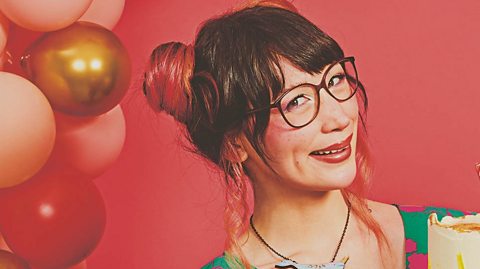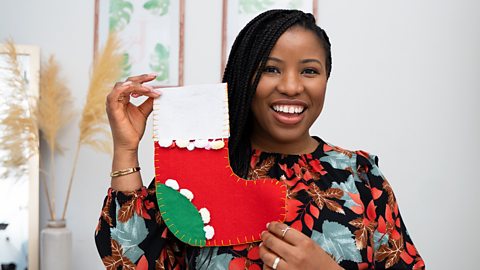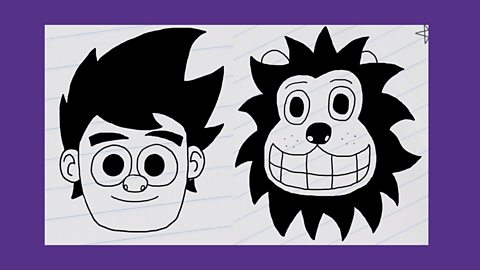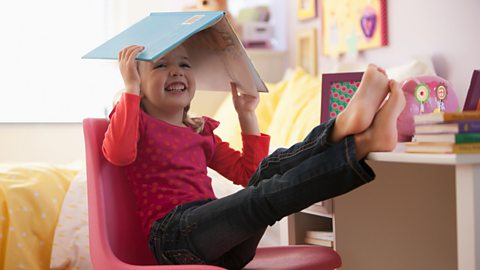Julia Donaldson and Axel Scheffler have been a well-oiled book-making machine for nearly 30 years, creating best-sellers like The Gruffalo, Room on the Broom, and, of course, The Smeds and the Smoos – a tale of two aliens who fall in love against the odds.
Now with the special animated version of The Smeds and the Smoos on iPlayer, it's the perfect time to sit down with your budding writer or illustrator, discover how the loobular lake and humplety hill came into being and, perhaps, give them some inspiration to write a picture book of their own.
As well as a behind-the-scenes look at how Julia wrote The Smeds and the Smoos, head down the page for some writing tips you can share with your child and advice to get started in illustration from Axel himself…

Julia Donaldson on writing The Smeds and the Smoos
Watch this film to find out how Julia worked together with Axel to create The Smeds and the Smoos, what inspired her to create such fantastical names as Vumjum to Grimbletosh, and why she thinks their books are a hit with parents and children alike.
Tips to help your child write a story
There are all sorts of ways your child can create a story for their picture book, but sharing these top tips with them might serve as the inspiration they need to get started…
- Learn about different types of stories. As you can see from Julia and Axel's many collaborations, books can be about anything at all. However, all that possibility can often feel overwhelming for a child as they get started. It might be helpful for your child to think about what kind of story (genre) they'd like to write first - maybe a fairy story, or a scary story, perhaps a swashbuckling adventure, or science fiction?
These KS2 English guides on fiction from ґуПуґ«ГЅ Bitesize can help your child learn about the rules of each genre.
Think about the ending early on. As Julia said in a Radio 2 interview, you wouldn’t start writing a joke without coming up with the punchline first. If your child already has a setting, characters and a quest in mind, having an ending could help them get a clear idea of where the story will go.
Give the main character (protagonist) a problem that gets worse before it gets better. Your child might feel like they are being harsh on their newly formed characters, but it isn't a story without a quest and every quest is a problem that needs solving. Once that problem is solved it's time to wrap up the story, or come up with a new problem!
Encourage them to read lots and look for inspiration everywhere. Julia's 1995 hit The Gruffalo was based on a Chinese folk tale she'd read about a girl and a tiger in the forest, she found inspiration for The Ugly Five from an African safari and The Smeds and the Smoos is based on Shakespeare's Romeo and Juliet - but, this time, with a happy ending!

Axel Scheffler's tips for budding illustrators
In this film, produced by the British Library for its , Axel gives his top tips to help budding illustrators and artists start their own stories.
Share Axel's ideas with your child to introduce them to the world of illustration!
Tips to encourage your budding illustrator
Help your child find a story to illustrate. This could be one they've written, using the tips above, or scenes from their favourite book. If they decide to illustrate someone else's story, look for colourful characters in exciting locations to help them get excited about their designs.
Develop the main character designs. The protagonist (or protagonists) will be the most important illustrations to get right, so your child should create a few different versions to choose from - Axel's first version of the Gruffalo was far more fearsome than the one that made it into the book! You can help your child by encouraging them to talk about how they would describe a character, to help them build a picture in their head. Are they scary, cute, or strong? Where have they come from?
Create a bank of smaller illustrations. Now it's time for your child to think about what could go on the pages, like other characters from the story, or parts of the environment - think of the alien species and unfamiliar landscapes in Axel's designs for The Smeds and the Smoos. Once they've built up a bank of these illustrations, they can start to bring together these elements into their first scene!
Look at other illustrator's work. It's important to encourage your child to be open to inspiration from anywhere. You could look at lots of other picture books together at the local library, or they might discover a design or style they like in their favourite cartoon, video game, or even a poster on the high street. Illustrators are everywhere!
Experiment! Illustrating in pencil is a good way for your child to start, but what next? They might want to use a pen to create bold outlines and there are lots of ways to introduce colour to the scene - colouring pencils might feel like the first (and least messy) option, but you could also help your child try watercolour paint as a fun and cheap alternative.
There's a world of options out there for your child to try and, as Axel says - "stay curious!"

More from ґуПуґ«ГЅ Bitesize Parents' Toolkit…
Parents' Toolkit
Fun activities, real-life stories, wellbeing support and loads of helpful advice - we're here for you and your child.

Kim-Joy: Five tips (and a recipe) to get your kids helping at Christmas
Bake Off star Kim-Joy has tips for getting kids to help at Xmas - and a delicious recipe for reindeer themed biscuits.

Barry Lewis: How to make Christmas cupcakes with the family
Food vlogger Barry Lewis is a self-taught cook with 1000's of videos charting his culinary journey. He and his family have got a brilliant bake for you to try this Xmas.

Sewing for beginners: How to make Christmas stockings with Juliet Uzor
Juliet Uzor - Great British Sewing Bee winner, mum and sewing blogger has a tutorial to help your family make personalised Christmas stockings together.

Creating a comic book - tips to help your child get started
Check out these free drawing tutorials with Beano Studios to help your child improve their comic art skill-set.

